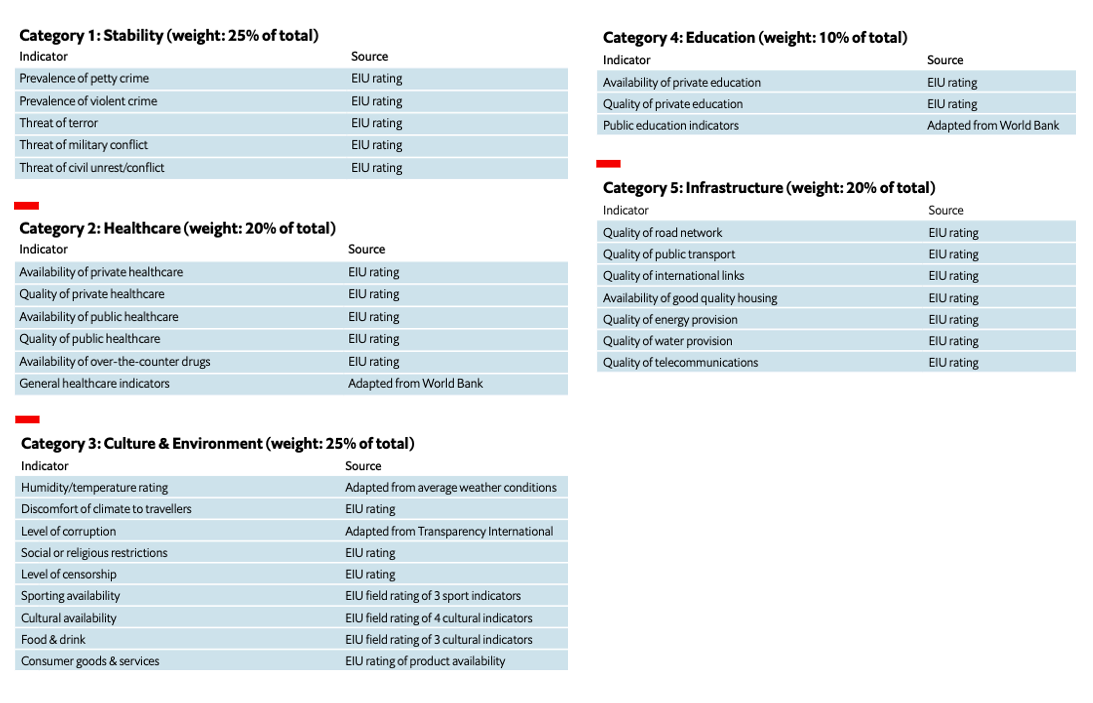LIVE SMARTER
Vienna named the most ‘liveable’ city in 2023 — providing ‘affordability’ isn’t your top priority

The Economic Intelligence Unit’s Global Liveability Index is a rating system that annually ranks cities from most to least hospitable, although your definition of liveable may not be exactly the same as theirs.
What is The Global Liveability Index?
The Global Liveability Index (GLI) is a metric used to assess and rank the quality of life in cities around the world, published annually by the Economic Intelligence Unit (EIU). Using surveys, it quantifies how hospitable a city would be to an individual using a complex weighted score system to provide each city with a rating of 1-100, where 1 is considered intolerable and 100 is considered ideal.
The EIU’s recently published results gave Vienna a score of 98.4, making it 1 of 173 cities assessed. The average score in 2023 was 76.2, the highest score in 15 years and a 3-point increase from the previous year, due in large part to the relaxing of Covid-19 restrictions. Coronavirus outbreaks and regulations have been strongly linked to reduced scores over the past few years but the bottom 10 is still primarily made up of cities experiencing ongoing social unrest, terrorism, and conflict (like Tripoli, Kyiv or Damascus, which received the lowest score – 30.7)
The EIU is a sister organisation to The Economist — it’s an international private economic analysis group that provides reports to global companies.
While their summarised findings are available on their white paper online, accessing the actual dataset and information about how each factor is estimated requires purchasing one of their biannual report packages which range from $810 for an overview to $10,995 for full access.
It’s important to remember that’s essentially what the index is — a report intended to help generate revenue for the EIU and be used by its clients as possible tools for investments — the index is not actually geared towards most people, and a high ranking may not mean what you think it does.
So what’s the GLI for then?
The index is more useful for big businesses and investors than for most people, and this is evident in which data points are considered and prioritised.
For example, while the index does measure the quality of public transport and available housing, it doesn’t measure their affordability — a sticky point for many who cannot afford to live in a city and might choose suburbs instead. In general, citizens might also be more concerned about a city’s walkability, or the number of bike paths or how close to the city centre they’d be able to live, or whether the school in their neighbourhood would have space for their kid etc.
Similarly, the index also helps companies calculate how much “hardship allowance” they would need to pay employees who relocate as part of expatriate relocation packages. The concept of a “hardship allowance” is to quantify the challenges presented to an employee’s lifestyle in each city to allow for direct comparison between locations, and a proportional increase in their pay based on the level of inconvenience. Ascribing a number to comfort or the lack thereof requires making some tricky value judgement on subjective experiences.

A table showing the EIU’s suggested liveability scale which recommends how much “hardship allowance” a company should pay their employee relative to other locations, as shown in their 2023 online white paper.
What is being measured?
The ratings are assigned based on about 30 qualitative and quantitative factors across five broad weighted categories: Stability, (25%) Healthcare, (20%) Culture & Environment, (25%) Education, (10%) and Infrastructure (20%). The factors change slightly year by year (for example, new factors were added to account for Covid).
Each factor is rated as acceptable, tolerable, uncomfortable, undesirable or intolerable. Qualitative factors are rated by EIU analysts and in-city contributors.

Category weighting of the The EIU’s liveability score as shown in their 2023 online white paper.
Should we be measuring liveability?
If we are simply interested in where people are happiest, we might consider the World Happiness Report, but the EIU’s GLI strives to largely divorce the variables culture from how conducive a location is to happiness, and that may not be useful to people who live somewhere long enough to be immersed in, and influenced by its culture.
That is not to say that the project of measuring and ranking “liveability” is futile. While the GLI as a whole may not be useful to the public in the way that its name suggests, the less subjective factors that it compares (such as the quality of telecommunications or roadways, or the prevalence of crime) are useful to be able to compare, and access to information about how your city compares to others empowers you to hold your government accountable.
We can leave it to the sociologists and economists to argue about how the factors of liveability should be balanced, but there is general agreement that the primary ingredients for liveable communities are environmental sustainability; people feeling safe and socially included; and access to affordable and diverse housing, transport, education, and outdoor leisure. DM

















Comments - Please login in order to comment.